Erotic Art – Exploring the Different Depictions of Sexuality in Art
Erotic artwork is a diverse category of visual arts that includes any artistic creation meant to elicit erotic pleasure, typically representing human nakedness as well as sexual behavior. Sexual artwork may be discovered in practically every visual media, such as sketches, engravings, movies, erotic paintings, photography, and sculptural works. Throughout history, the representation of sexuality in art has varied according to each society. Today, we will be exploring the erotic fine arts through the ages, but be aware that this is NSFW artwork, meaning that it is not suitable for the workplace.
The History of Erotic Artwork and Erotic Artists
Because judgments of what is pornographic and what is art differ, the concept of sexual artwork is rather subjective and context-dependent. A phallus statue, for instance, may be regarded as a customary emblem of virility rather than explicitly pornographic in certain cultures. Content created to promote sex education may be seen as overly provocative by others.
Erotic artwork is a type of art that has been developed with the goal of sexually stimulating its intended viewers, and that achieves this goal to some extent.
Pornography shows situations of sexual intercourse and is designed to elicit sensual pleasure but it is not commonly regarded as erotic fine art. Some distinguish between sexuality in art and pornography based on the erotic artists’ objective and statement: Erotic paintings would be works designed for purposes other than just purely sexual pleasure that may be admired as art by someone disinterested in its sensual component.
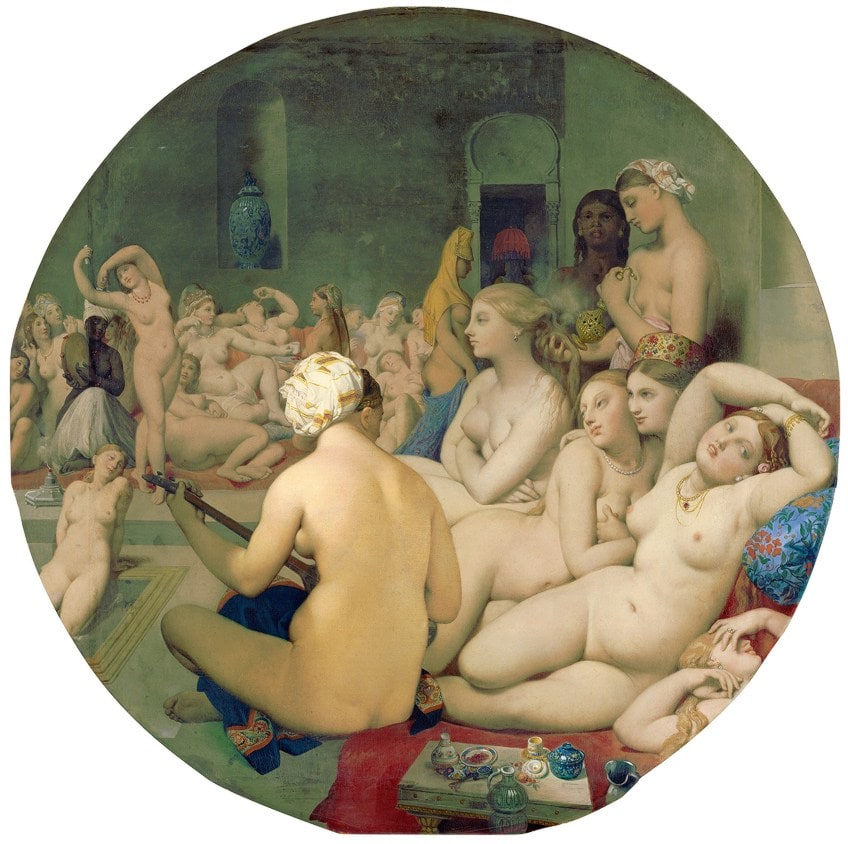
Historical Significance
Paleolithic images and sculptures are among the oldest extant instances of sexual representations, although erotic artwork has been created by many cultures. Objects from ancient Mesopotamia have been uncovered that portray graphic heterosexual intercourse.
The Sumerian Early Dynastic Period glyptic art typically depicts depictions of frontal intercourse in the missionary position. In early second century BC Mesopotamian votive plaques, the male is generally represented penetrating the female from behind as she leans over, sipping beer with a straw. Middle Assyrian-led votive statues frequently depict a man standing and entering a lady who is resting on top of an altar.
All of these sexual artworks have usually been understood as scenes of ceremonial intercourse, although they are more likely to be related to the religion of Inanna, the deity of sexuality and prostitution.
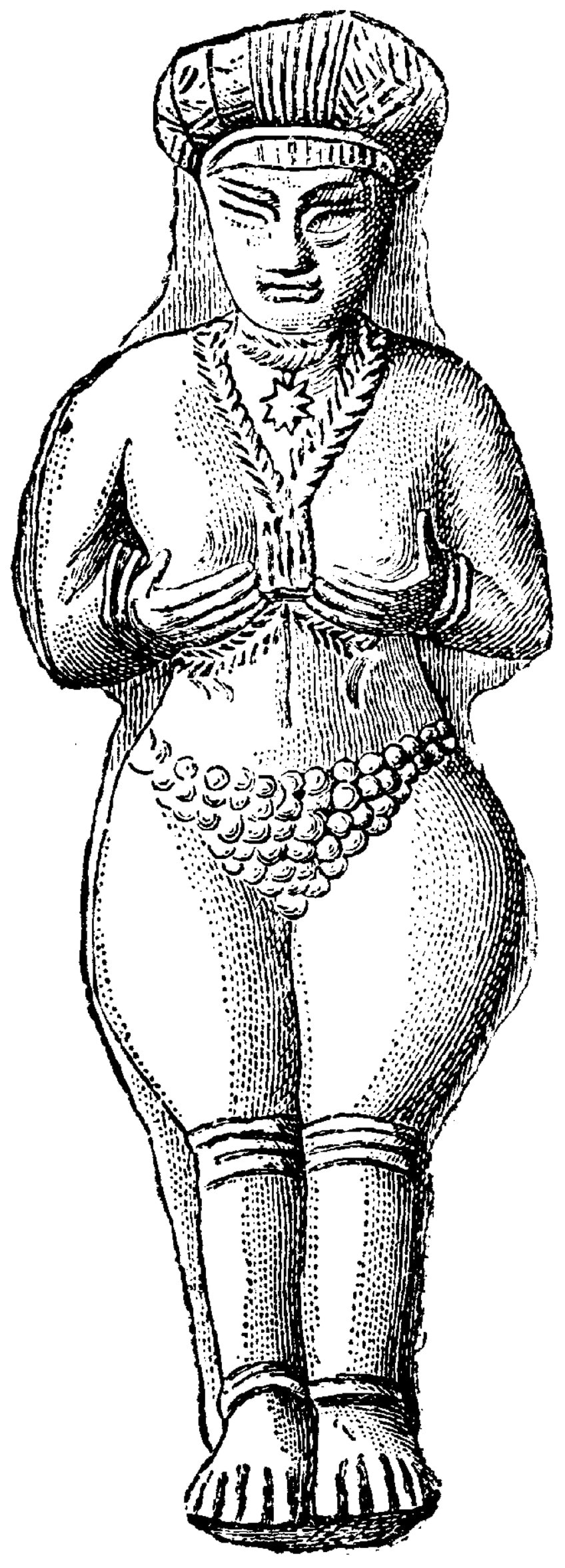
Many sexually graphic depictions were discovered at the sanctuary of Inanna at Assur, as well as replicas of female and male sexual organs, such as stone phalli, which may have been placed around the necks as a talisman or used to embellish cult sculptures and clay replicas of the female vaginal opening.
Although representations of sexual intercourse were not common in ancient Egyptian formal art, primitive drawings of intercourse have been discovered on ceramic shards and in graffiti.
The Turin Erotic Papyrus is an Egyptian papyrus scroll unearthed at Deir el-Medina that has a sequence of twelve vignettes depicting men and women in different sexual situations. The men in the imagery are “raggedy, going bald, small, and portly,” with unnaturally huge genitalia, and do not meet Egyptian standards of beauty desirability. The females, on the other hand, are nubile and are displayed with items from classical erotic symbology, such as convolvulus foliage, and, in certain images, they are even carrying objects typically affiliated with Hathor, the deity of love, such as lotus flowers and primates.
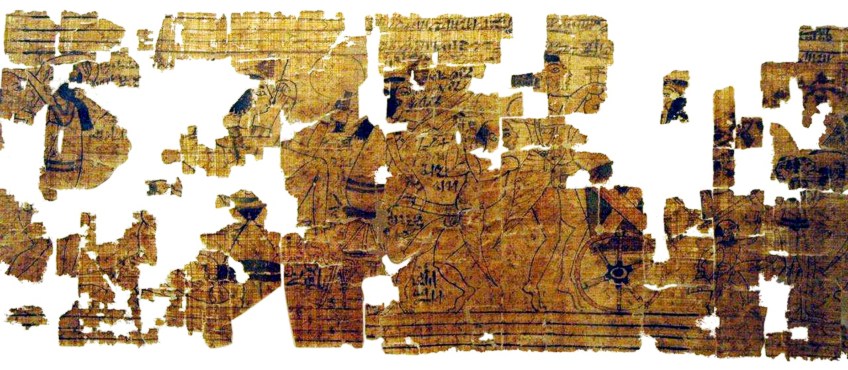
The scroll was most likely produced during the Ramesside period, and its great artistic quality suggests it was made for a privileged audience. There have been no other such scrolls unearthed so far. Many of the earliest depictions of same-sex interactions may be seen on the walls of ruined Roman buildings at Pompeii, and the ancient Greeks created sexual images on their ceramics, many of which are renowned for being among the first depictions of same-sex interactions.
Another ancient culture from South America, the Moche, carved vivid depictions of sex into their ceramics. The Larco Museum in Lima has an entire hall dedicated to pre-Columbian sexual pottery.
During his college years, Edward Perry Warren developed a passion for Greek art. Perry then became an erotic art collector who specializes in Greek erotic art artifacts that frequently depict gay sexual encounters. The Warren Cup has depictions of males having anal intercourse. In Eastern civilizations, there is a long history of sexual art.
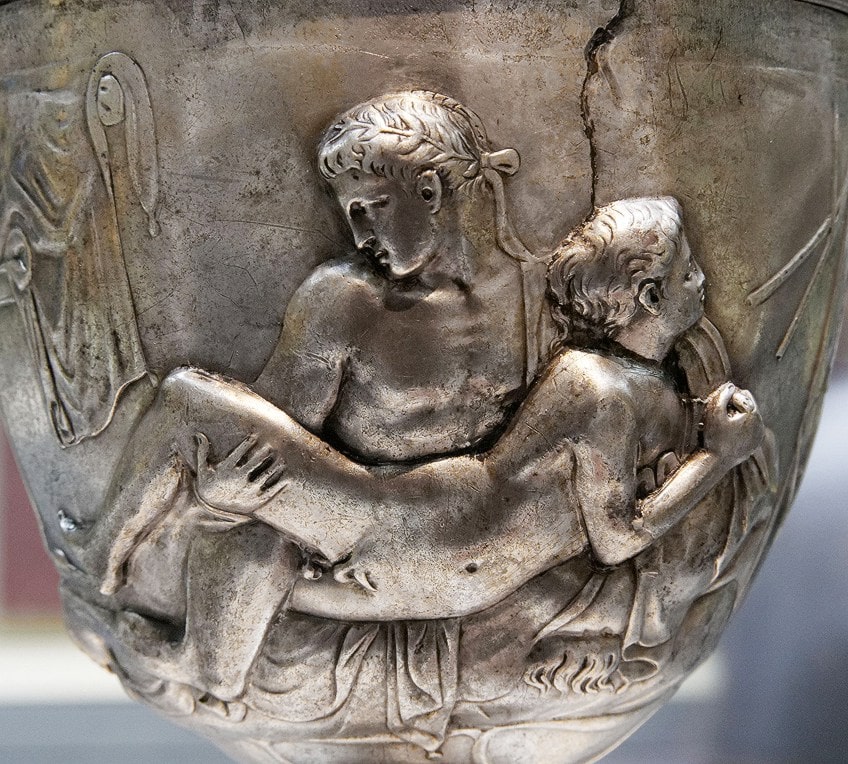
Shunga, for example, first debuted in Japan in the 13th century and grew in prominence until photography was established in the late 19th century. Shunga, or “spring images,” was a collection of explicit erotic paintings produced with ink or woodblock prints that were printed onto paper scrolls as an orientational introduction to sex education in Japan during the Edo era.
Shunga was an Asian religious group that intended to unleash all people’s inherent sexual selves, including females and gay sexuality.
Couples engaged in sexual actions were depicted smiling and enjoying their partner’s company, emphasizing the positive aspects of sex. Shunga was greeted with criticism and forbidden in Japan about 1700, yet the distribution of this important Erotic artwork remained.
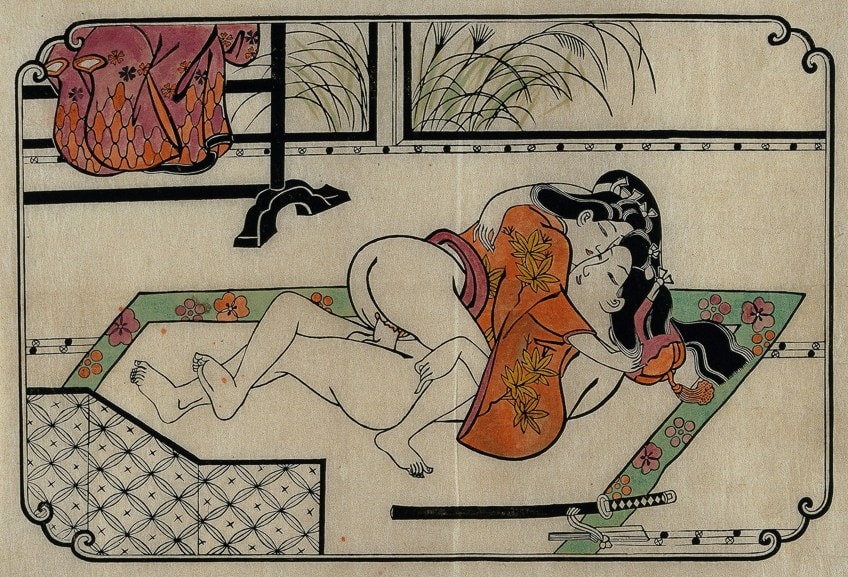
Shunga might be found in many Japanese individuals’ homes and institutions. Similarly, Chinese erotic art peaked in popularity during the latter half of the Ming Dynasty. The renowned Kama Sutra in India is an old sex handbook that is still widely read across the world.
I Modi
Beginning with the Renaissance, there was a history in Europe of manufacturing erotica for the enjoyment of the elite. The text “I Modi” was a woodcut book made in the early 16th century. In Italy, erotic fine art took numerous forms, but artist Giulio Romano is most known for his iconic I Modi drawings.
Raphael was commissioned by Pope Julius II to adorn chambers in the Vatican that housed only the religious elite. After his death, Romano was left with the task of finishing his last installation in the Vatican dwelling quarters in the Sala. The Sala served as a meeting place for the religious elite. The paintings in this area showed Emperor Constantine in a way that illustrated images of Christianity’s successful spiritual victory against Paganism.
Romano drew sexually graphic situations between mythological renowned historical couples while finishing these pieces.

These illustrations were created to convey the basic essence of sex between humans. I Modi provided the people the right to view things that the Vatican’s clerics had forbidden them from viewing. The designs finally found their way to the engraver Marcantonio Raimondi, who had also been formally trained by Raphael. Raimondi produced and marketed Romano’s prints.
The artworks immediately became popular among non-elite members of society and were spread around Italy’s Vatican City.
Pope Clement commanded the destruction of this forbidden issue in Italy. Marcantonio Raimondi was detained for copying and distributing I Modi. Caravaggio created Amor Vincit Omnia in 1601 for the collection of Marquis Vincenzo Giustiniani.
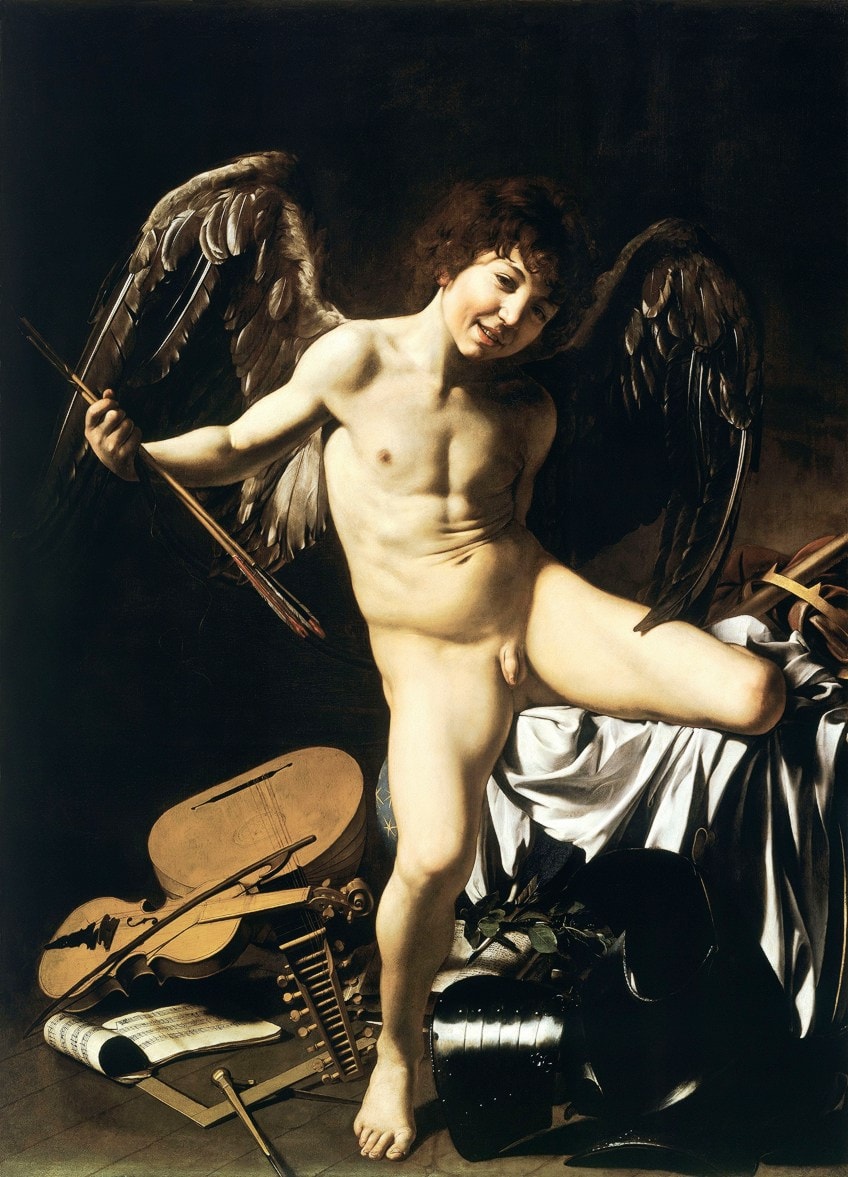
Catherine the Great also commissioned an erotic cabinet, which appears to have been close to her suite of chambers at the Gatchina Palace. The furniture was outlandish, including tables with huge penises for legs. On the furniture, vaginas and penises were carved. Sexual artwork was adorning the walls. The chambers and furniture were observed by two Wehrmacht officers in 1941, but they appear to have gone since then. According to a documentary by Peter Woditsch, the cabinet was located at Peterhof Palace rather than Gatchina.
Later, more contemporary painters followed in the footsteps of Millet, Picasso, Edgar Degas, and Egon Schiele.
Schiele was imprisoned and had numerous paintings burned by the government for depicting naked females, which offended modern morals. By the 20th century, photography had become the most popular medium for sexual art. Taschen, for example, mass-produced pornographic graphics and photos.
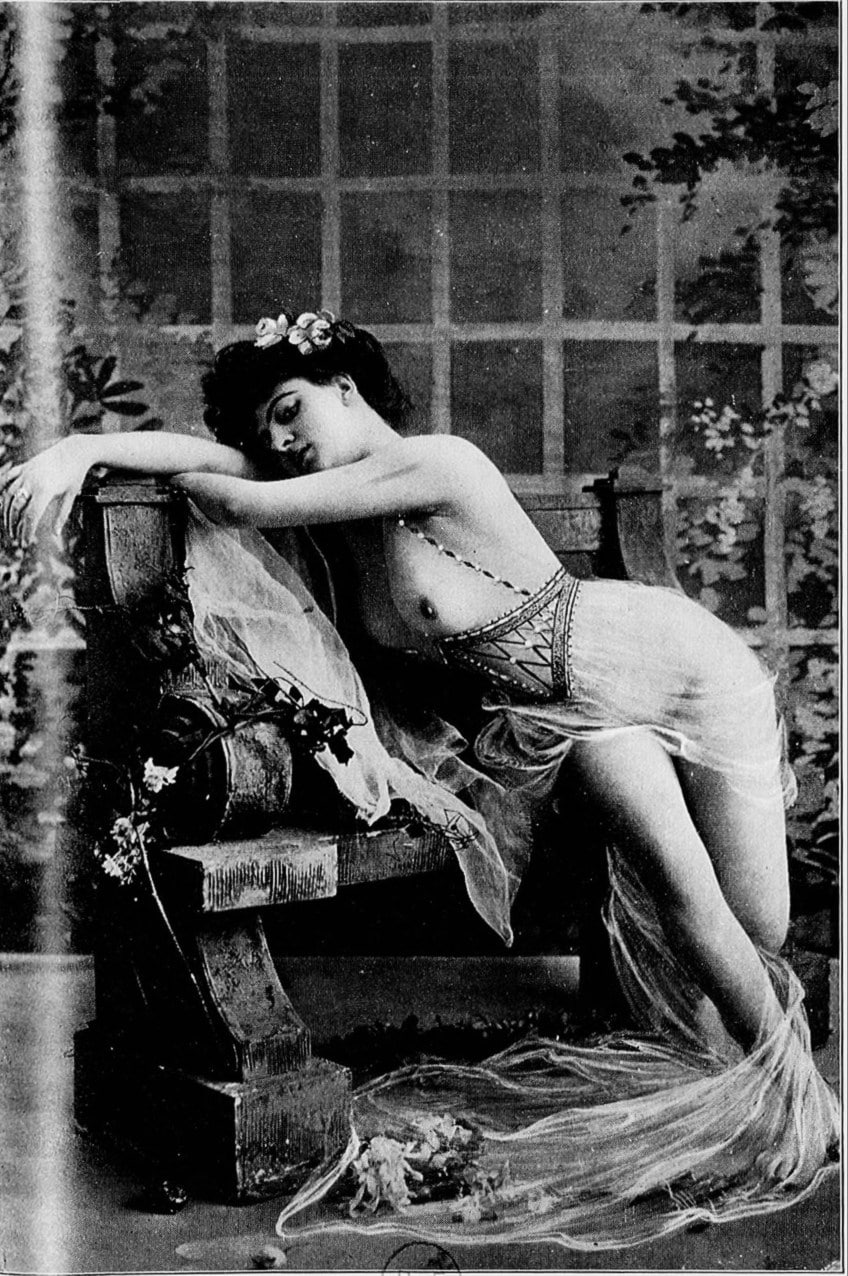
Sexuality in Art in the 20th Century
In the 2010s, there were a lot of erotic artists working. However, in some groups, most of the style is still not as generally recognized as more traditional painting forms such as portraits and landscapes. Over the course of the twentieth century, erotic images in art underwent a fundamental repositioning. Futurism, Cubism, and German expressionism were early 20th-century art styles that investigated the sexual by manipulating the naked to explore different views, color experimentation, and the reduction of the form into mathematical components.
In the mid-20th century, realism and surrealism introduced new ways of representing the naked.
The sexual became a vehicle for surrealist artists to explore themes of imagination, the subconscious, and the dream realm. Surrealist artists that dealt with the sensual directly included Giorgio de Chirico, Paul Delvaux, and Max Ernst. Following the First World War, there was a trend away from the abstract silhouettes of the 1920s and 1930s and toward realism. In England, painters such as British artist Stanley Spencer pioneered this repurposed attitude to the human form, with naked paintings of himself and his wife in sensual settings. This is shown in his work Double Nude Portrait (1937).
The naked portrait was becoming a dominant type of sexual art in the 20th century, much like the academic nude had in the 19th. Critical essays on the “nude”, particularly the female nude, resulted in significant modifications in how images of the nude and depictions of sexuality were viewed. Seminal books were re-examining the concept of the nude and sexuality in art.
This epoch in art was distinguished by a keen interest in politics. It was a watershed event in history that highlighted the significance of the sexual revolution in art.
The 1960s and 1970s saw a significant social and political transformation in Europe and America. The battle for women’s equality, with an emphasis on sensuality, woman’s choice, the household, and the workplace, was among the movements. Painters and scholars began to look into how imagery in Western art and media were frequently constructed within a male storyline, and how this maintained idealizations of the female figure. The questioning and examination of the dominant male perspective within the art history narrative, reflected in both critique and creative practice, came to characterize much of the art and erotic artists of the 20th century.
“More than any other topic, the nude might indicate that art begins in and is nourished by male sensual energy,” writes American art historian Carol Duncan of the male gaze and its link to erotic art. This is why many of the period’s ‘seminal’ masterpieces are naked.” Sylvia Sleigh’s work is an illustration of this inversion of the male gaze since it displays male sitters in conventional sexual reclining stances that were formerly designated for the female figure as a portion of the “odalisque” tradition.
With the development of feminism, the sexual revolution, and conceptual art in the mid-20th century, the connection between images and viewers, as well as the erotic artists and audience, began to be challenged and reinterpreted, introducing new areas of practice. Artists began to utilize their own naked bodies to present an alternate sensual story from different perspectives. Women artists were using performances and photography to call attention to concerns of gender power dynamics and the blurred lines between pornographic imagery and art, and new media was being utilized to show the naked and the sexual.
Since the 1960s, performance art has developed and is regarded as a direct reaction and response to conventional kinds of media, and it has been connected with the dematerialization of the work or item. As sensual performance thrived in the 1980s and 1990s, both female and male artists were experimenting with new erotic depiction tactics.
Martha Edelheit was a female artist noted for her innovations in erotic art as a defiant stand against traditional gender norms that prohibited women artists from unfettered sexual expression. As a result, women were frequently the focus of many notable erotic art paintings that appealed to males. Edelheit was chastised for being a female artist who made sensual artwork at a period when males were the primary producers of this genre. Edelheit was a feminist art movement pioneer since she was a woman who made sensual art and also represented herself in many of her pieces, paving the path for gender rights in sexual freedom.
Edelheit challenged the popular misconception that this work was obscene by providing a different perspective on oneself. Her paintings cleared the path for women to express their sexual urges freely. Painting naked male figures was unusual in the 1970s; her art flipped the script and let women be at the vanguard of the 1970s gender expression movement. The tolerance and appeal of erotic fine art have propelled the style into mainstream entertainment, spawning a slew of iconic icons.
Among the painters whose work has been extensively circulated are Luis Royo, Frank Frazetta, Boris Vallejo, Chris Achilleos, and Clyde Caldwell. The Guild of Erotic Artists was founded in 2002 to gather together a group of like-minded people whose main goal was to communicate themselves and promote the seductive art of erotica for the current day. Between 2010 and 2015, Laura Henkel, director of the Sin City Gallery, organized “12 Inches of Sin”, an exhibit that focused on art that expressed a broad vision of sexuality while also questioning concepts of high and low art.
Today, the erotic is continuously being investigated and exploited in new sorts of artwork, and the significant advances of the 20th century continue to support much of the prevalent sexual art and creative aim.
Notable Erotic Artworks
Humans have turned sexuality into erotic art, worship, and daily life from the dawn of civilization. There have been civilizations and eras where explicit sexual allusions were more acceptable by cultural norms, and times when they were not. Yet, the Church’s oppressive perspective of sensuality in the Middle Ages, followed by the suppressed sexuality of the Victorian age, has led many in the Western world to believe that few, if any, people in the past were ready and able to embrace and even delight in their sexuality. Here are a few artworks that made a statement in their time.
Lascivie (1600) by Agostino Carracci
| Year Completed | 1600 |
| Medium | Engraving |
| Dimensions | 21 cm x 15 cm |
| Current Location | Met Museum |
The sexual prints in this collection are among the very few such pieces that have been preserved from the 16th century, when a major development in printing technology permitted a wider range of collectors to follow their specialized interests than ever before. Many similar publications, including the infamous I Modi by Marcantonio Raimondi, would have been banned during moralizing purges. The Lascivie, created by famed engraver Agostino Carracci, are less vivid than Raimondi’s paintings and cover a broader variety of biblical and mythical topics, of which these two are instances.
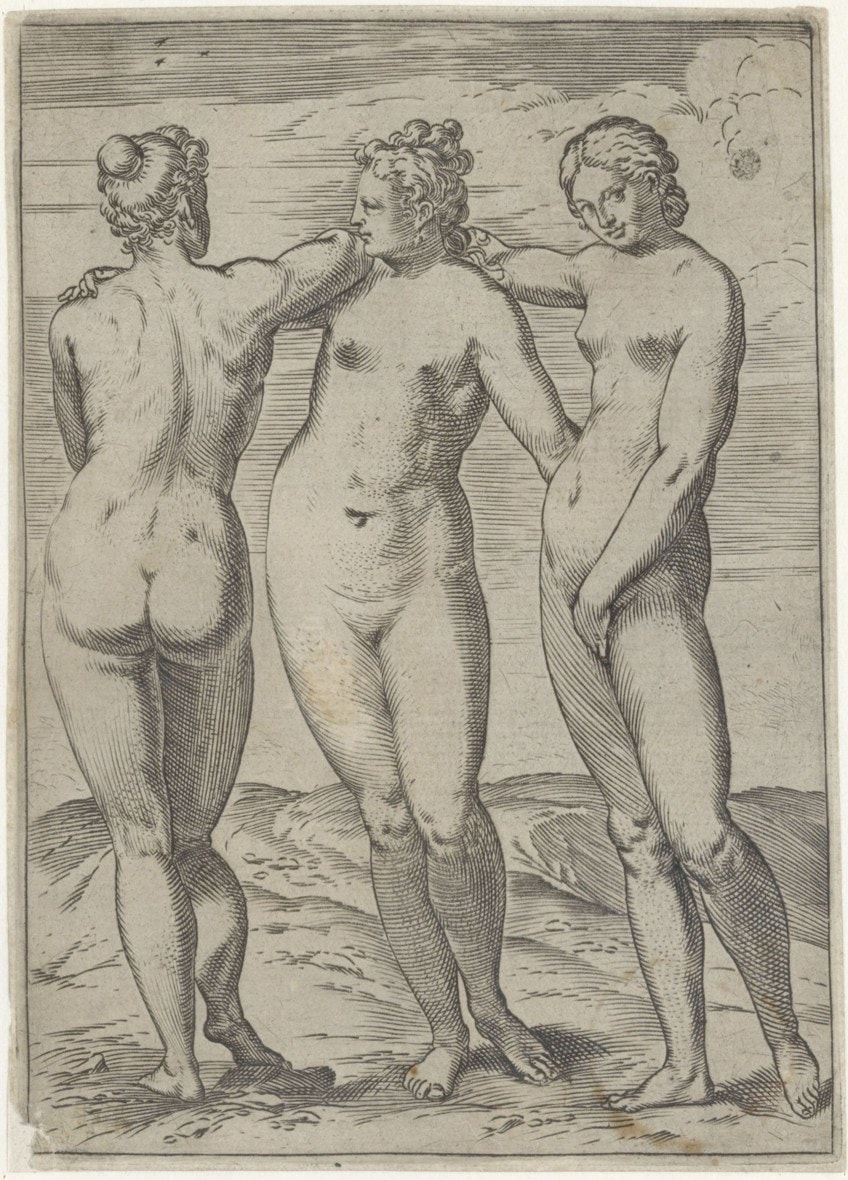
One etching depicts the Three Graces in forward-facing, backward, and three-quarter stances; the rest are based on a frequent motif in the collection: nymphs. In one, a goat-like creature stands to make love to a nymph perched on a rock, while another depicts a masculine figure staring at a nymph sleeping under draperies reminiscent of Nicolas Poussin’s later painting Jupiter and Antiope. Finally, in Satyr Mason, the same character in an apron holds a plumb line over the female’s crotch. She is sharing her bed with a youngster, and there is also a cat on the ground and a birdcage in the distance.
Carracci was one of three brothers, along with the better famous painter Annibale, who helped to create the 17th century Baroque’s propulsive and intricate painting style.
Because of the exquisite prints he created of paintings by contemporaneous painters, Agostino was acknowledged as one of Italy’s best engravers. This series, on the other hand, is his own creation and demonstrates him to be a skilled artist in his own right, capable of re-creating ancient themes and telling stories in a clear, succinct manner. While the Lascivie is more comprehensive than I Modi, they nevertheless arrive in a fragmentary form, making it unclear if they were composed as a series or compiled afterward.
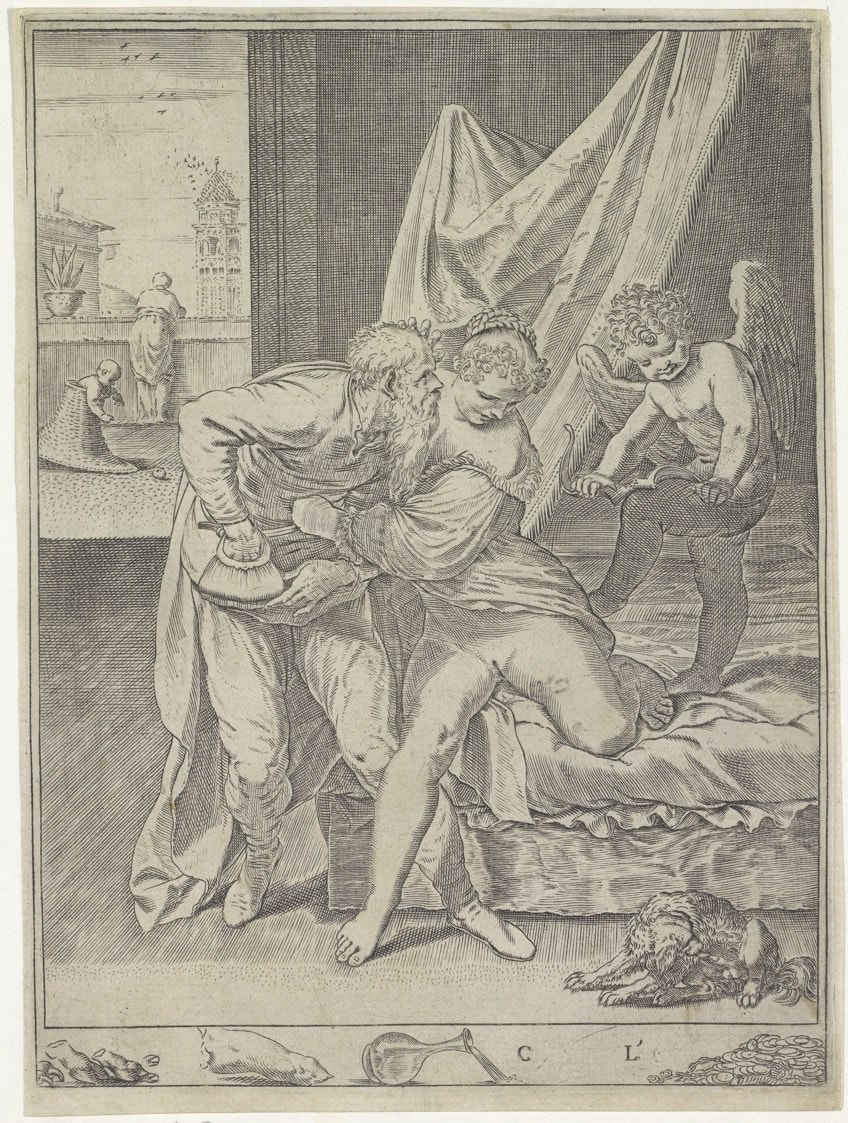
A book of similar prints has been reported by writers dating back to the 17th century, while the number of plates cited has ranged from the teens to the twenties. The two outdoor satyr pictures are the most closely connected, linked by both individuals and the wooded background, but the image of the copulating couple appears to have been done earlier, judging by the consistent thickness of Carracci’s lines.
As he evolved, the artist created softer, more rounded shapes. This implies that the artist worked on the Lascivie over time and that the project expanded from one-off prints into an open-ended collection with a similar format.
Drawing of an Erotic Scene with Three Women and One Man (1809) by Henry Fuseli
| Year Completed | 1809 |
| Medium | Pencil on Paper |
| Dimensions | 18 cm x 24 cm |
| Current Location | Tate, London |
While many early works move its sexuality onto the handling of paint or shift it into substitute objects inside the painting – foaming oceans, flowing hair – Henry Fuseli’s sketch is securely grounded within the domain of 19th-century eroticism. Three ladies are depicted in this pencil and watercolor drawing, along with a prostrate male, his head covered between the legs of the lady on the right.

The multiple bodies create a triangle, with the figure at the summit lowering herself upon their shared lover’s manhood, while the third person aids by supporting his penis. The women’s obvious body hair and bold sexual cravings indicate that they are prostitutes. Johan Fuseli was a Swiss painter who relocated to England after spending time in Italy.
Fuseli, who was drawn to topics ranging from the occult to Shakespeare’s works, sealed his fame with a picture of a prostrate lady accompanied by a wild-eyed horse and a monstrous tiny creature known as an incubus.
When The Nightmare (1781) was displayed in 1782 at the Royal Academy of Arts, it received both critical praise and condemnation; while this did not lessen the artwork’s appeal, the idea that the young lady was in the throes of a sexual dream was scandalous.
Memory of the Halls of Mirrors in Brussels (1920) by Otto Dix
| Year Completed | 1920 |
| Medium | Pen and Ink |
| Dimensions | 28 cm x 22 cm |
| Current Location | Musée national d’art moderne |
This image was intended to stun. It was painted in 1920 by the avant-garde German artist Otto Dix, and it represents a turning point in the artist’s career as he began to renounce the eccentricity of Cubism and Dadaism in favor of a harsh Critical Realism. The picture portrays a crimson-faced commander, saturated with red wine, touching a plump, nude prostitute’s huge breast. The scenario is replicated from every aspect by the several mirrors, such that the woman’s coarsely drawn genitalia can be seen reflected on the brothel ground, while her bottom frames the picture on the sides of the image.
Dix’s social conscience was stirred, as it was for many of Germany’s avant-garde artists when faced with the heinous reality of the Weimar Republic.
He dreamed of a fairer future in which men might transcend their class levels after serving as a soldier in World War I. His moral fury at postwar Europe’s hideous and decadent degradation became the primary topic of his paintings, and he zoomed in on the prostitutes, gangsters, racketeers, and homeless who had appeared in the intervening period. His rage at the exploitation of the war injured, who had been left half-starved and therefore unable to maintain themselves, was shown harshly, comparing the unfortunate’s misery with the terrible greed of the affluent.
The sex business had become prevalent in Brussels, where this artwork is situated, during the war because troops were permitted to carouse for a week or two before continuing their obsessive killing on the front lines. The subject matter is intended to be provocative, and it led Dix before the German courts in 1923 when he was convicted and convicted for obscenity.
It’s a hedonistic image of carnal passion, suffused with a raw sensual intensity that never ceases to thrill and stun.
The Great Masturbator (1929) by Salvador Dalí
| Year Completed | 1929 |
| Medium | Oil on Canvas |
| Dimensions | 110 cm × 150 cm |
| Current Location | Museo Nacional Centro de Arte Reina Sofía, Madrid |
The Great Masturbator is described by the Surrealist Salvador Dalí as his self-portrait, a “representation of my heterosexual uneasiness,” and that “masturbation at the time constituted the center of eroticism.” Dalí was candid about his apprehension about genital contact and his penchant for autoeroticism in discussions and in his three memoirs. A “panic phobia of venereal diseases” developed when he was a child and saw medical photos of the damage they cause in a textbook put on the household piano by his father.
He was also concerned about the size of his penis, which he perceived to be little in comparison to those of his peers, and an account of an imposingly huge piece in an erotic novel he had read contributed to his recurrent impotence.
At the age of 25 (the period of this picture), he was still a virgin when he encountered Gala Éluard, whom he wedded five years later. In fact, one section of his autobiography was headed How to Become Erotic While Remaining Chaste, yet the painter said that his wife, who was 10 years his older, did assist him in refining his masturbatory method. The massive central shape in this picture is one of his distinctive flaccid self-portraits, which may be seen most notably in the front of The Persistence of Memory (1931), encircled by melting clocks.
The head is turned downwards in The Great Masturbator, with the point of his nose reaching the ground. An eyelid and lashes may be seen on the left, and a fur-lined straight slit depicts female genitalia, eyebrows, a furrowed forehead, and separated hair. He is sleeping, and the picture depicts his dream. A lady arises from his head, her virginity symbolized by the white lily, a sign in Western art of the Virgin Mary, and luxuriates in her fragrant meeting with the artist’s genital area, hidden behind his underwear.
A grasshopper with a pile of consuming ants in the location where we would anticipate its pubis if we were to anthropomorphize it is mounted on his face. The artist’s investigation of sexual and dream themes is typical of the Surrealist movement, which he embraced the same year that this picture was completed. Surrealists used literature and art to convey Freudian theories about dream analysis, the subconscious, and sexual and violent urges. Bourgeois society has a tendency to suppress biological impulses, which the Surrealists intended to destroy with their frightening art.
Most of us recall a time when sexuality was a taboo issue, until the momentous societal transformations of the 1960s and 1970s. Many 20th-century authorities agreed with this viewpoint, and blatantly sexual items and events were frequently cut out of history books and museums. As sexual standards evolved over the course of the 20th century, we began to recognize the actual character of the past and discovered that many prior cultures embraced sexuality and genitalia in ways that would appear excessive today.
Take a look at our erotic art webstory here!
Frequently Asked Questions
What Is NSFW Artwork?
Have you ever seen the letters NSFW and wondered what it stands for? It is short for Not Suitable for Work. It means that whatever article claims that it is NSFW should probably not be viewed at your workplace, as it could be deemed highly inappropriate. It is better to read these types of articles in the privacy of your own home.
What Is Erotic Artwork?
Because people’s definitions of what is pornographic and what is art vary, the idea of sexual artwork is highly subjective and context-dependent. In certain cultures, phallus statues may be seen as a conventional symbol of virility rather than as blatantly sexual. Others may perceive content meant to encourage sex education as unnecessarily provocative. Erotic artwork is a form of art that was created with the intention of sexually exciting its intended viewers, and it does so to some level. Pornography depicts sexual encounters and is intended to evoke sensory pleasure, although it is not widely recognized as erotic high art. Some separate sexuality in art from pornography depending on the intention and declaration of the erotic artist: Erotic paintings would be works produced for objectives other than merely sexual pleasure that may be valued as art by someone uninterested in its sensual component.
Isabella studied at the University of Cape Town in South Africa and graduated with a Bachelor of Arts majoring in English Literature & Language and Psychology. Throughout her undergraduate years, she took Art History as an additional subject and absolutely loved it. Building on from her art history knowledge that began in high school, art has always been a particular area of fascination for her. From learning about artworks previously unknown to her, or sharpening her existing understanding of specific works, the ability to continue learning within this interesting sphere excites her greatly.
Her focal points of interest in art history encompass profiling specific artists and art movements, as it is these areas where she is able to really dig deep into the rich narrative of the art world. Additionally, she particularly enjoys exploring the different artistic styles of the 20th century, as well as the important impact that female artists have had on the development of art history.
Learn more about Isabella Meyer and the Art in Context Team.
Cite this Article
Isabella, Meyer, “Erotic Art – Exploring the Different Depictions of Sexuality in Art.” Art in Context. April 26, 2022. URL: https://artincontext.org/erotic-art/
Meyer, I. (2022, 26 April). Erotic Art – Exploring the Different Depictions of Sexuality in Art. Art in Context. https://artincontext.org/erotic-art/
Meyer, Isabella. “Erotic Art – Exploring the Different Depictions of Sexuality in Art.” Art in Context, April 26, 2022. https://artincontext.org/erotic-art/.




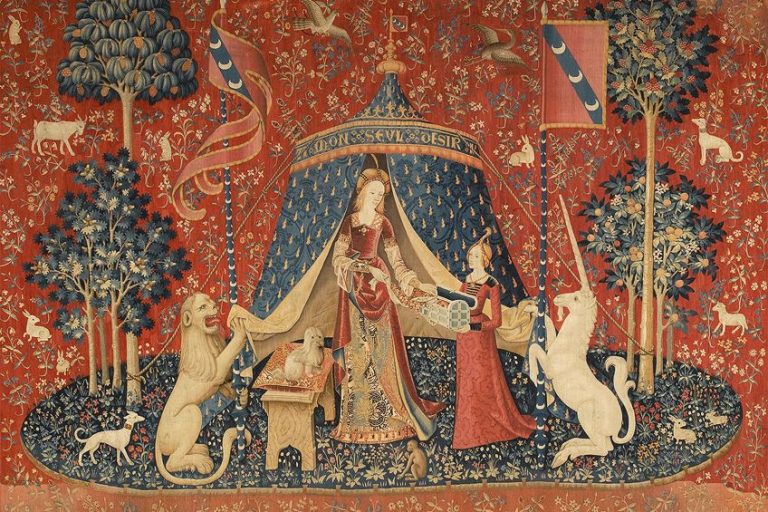

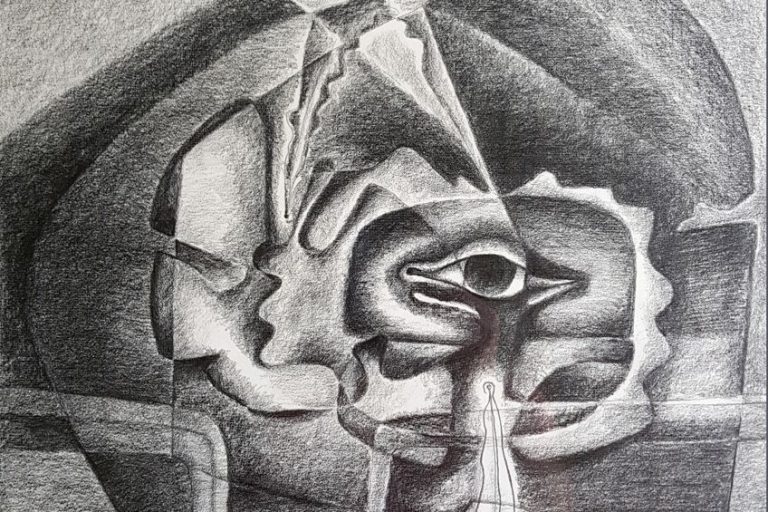

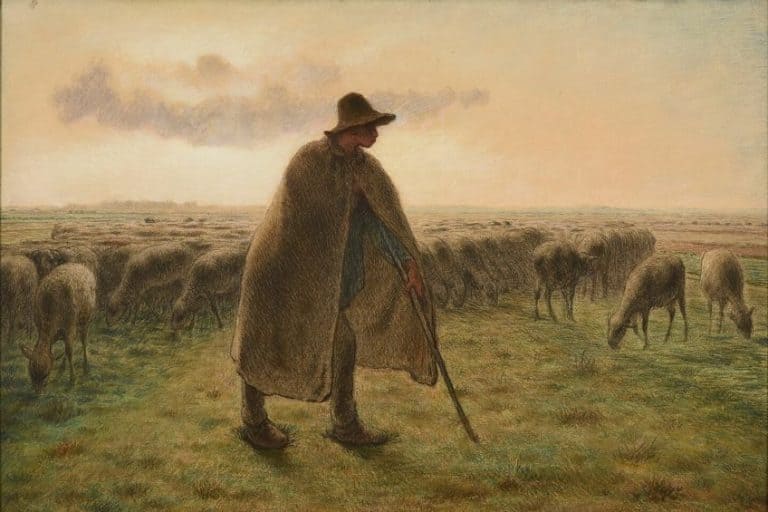



Thank you for this work.